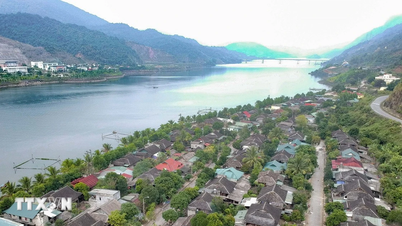According to a VNA correspondent in Moscow, Russian scientists from the Arctic and Antarctic Research Institute (AARI) have noted that glaciers in the southwest of Spitsbergen Island are melting at a very rapid rate.
They note that the last time such a phenomenon occurred was about 4,000 years ago – back when the Cheops pyramid and the last mammoths existed.
The archipelago is now at the epicenter of climate change, scientists say. Over the past five years, glaciers in southwestern Spitsbergen have lost nearly 2.5 metres of thickness each year.
According to Anton Terekhov, a researcher at the Institute of Arctic and Antarctic Research, if the current melting rate continues, the Aldegonda glacier with an average thickness of about 80 m could disappear within 30 years.
Scientists note that observing the retreat of the Spitsbergen glaciers is of fundamental importance for Arctic ecosystems, as this process determines freshwater runoff, affects river regimes, changes in permafrost and nutrient flows into the waters of fjords.
Previously, according to a UNESCO report, the melting ice is threatening the food and water supplies of 2 billion people. The organization noted that the current “unprecedented” rate of melting of glaciers will cause unpredictable consequences.
In a study by the World Meteorological Organization (WMO), Spitsbergen was named as one of the regions most affected by rapid ice loss, along with Norway, Sweden and the tropical Andes.
The report states that melting glaciers and reduced mountain snow cover affect two-thirds of the world's total irrigated agricultural land.
The organization stressed that more than 1 billion people live in mountainous areas and of those, up to half in developing countries face food insecurity./.
Source: https://www.vietnamplus.vn/cac-nha-khoa-hoc-nga-canh-bao-song-bang-spitsbergen-dang-tan-nhanh-post1024444.vnp


![[Photo] General Secretary concludes visit to Azerbaijan, departs for visit to Russian Federation](https://vphoto.vietnam.vn/thumb/1200x675/vietnam/resource/IMAGE/2025/5/8/7a135ad280314b66917ad278ce0e26fa)
![[Photo] General Secretary To Lam receives leaders of typical Azerbaijani businesses](https://vphoto.vietnam.vn/thumb/1200x675/vietnam/resource/IMAGE/2025/5/8/998af6f177a044b4be0bfbc4858c7fd9)




















































![[Photo] Prime Minister Pham Minh Chinh talks on the phone with Singaporean Prime Minister Lawrence Wong](https://vphoto.vietnam.vn/thumb/402x226/vietnam/resource/IMAGE/2025/5/8/e2eab082d9bc4fc4a360b28fa0ab94de)


































Comment (0)